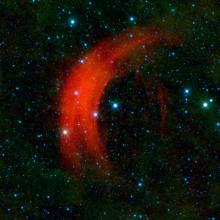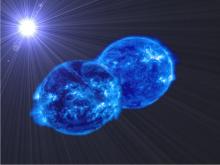Listen to today's episode of StarDate on the web the same day it airs in high-quality streaming audio without any extra ads or announcements. Choose a $8 one-month pass, or listen every day for a year for just $30.
You are here
Camelopardalis
The subtle band of the Milky Way arcs low across the west this evening. It sweeps from Sirius, the brightest star in the night sky, in the southwest, through Orion, and over to W-shaped Cassiopeia low in the northwest.
Under dark skies, you can see the glow of the Milky Way suffusing this collection of sparklers. As you look away from that band, though, things get darker. There are wide sections of sky with no bright stars, and not many faint ones, either.
Consider Camelopardalis, which is above Cassiopeia at nightfall. The constellation represents a camel with the spots of a leopard, hence its name — the camel-leopard.
From a light-polluted city, you won’t be able to spot any of its stars at all — they’re just too faint. And you need dark skies — dark enough to see the Milky Way — to see the stick figure outlined by the camel-leopard’s stars.
As you look in that direction, you’re beginning to look away from our home galaxy and toward intergalactic space. And a small telescope will reveal several galaxies.
The brightest is NGC 2403. It’s a fuzzy spiral galaxy about 10 million light-years away. It’s maybe half the diameter of the Milky Way. And it’s packed with bright clusters that are giving birth to many new stars. The heaviest of these stars live short, brilliant lives, then explode as supernovae. In fact, a supernova was seen on the outskirts of the galaxy back in 2004 — a rare bright spot in the intergalactic darkness.
Script by Damond Benningfield





